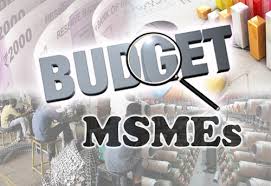What is next for MSMEs after Budget 2019?

MSMEs first got into a cash crunch when demonetization was announced in late 2016. The crunch exacerbated when GST was introduced in mid-2017 forcing a greater formalization of the unorganized sector. Not surprisingly, the subsequent budgets of 2018 and 2019, have taken up the cause of MSMEs as they form the backbone of the Indian economy. MSMEs in distress, is not just bad economics but bad politics too. But, why are Indian MSMEs so significant?
The importance of being an MSME
If you leave out the technical definitions, the MSME sector represents the scores of small and medium sized businesses in manufacturing, trading, retailing and other services. Some of the numbers are really staggering. The MSMEs contribute nearly 28% of the overall GDP of $2.75 trillion making them worth nearly $870 billion per annum. In addition, the MSME sector constitutes nearly 45% of the total manufacturing sector in India and 40% of all exports going out of India, as per data put out by the Ministry of Commerce.
That is not all! There are a total of 6.4 crore MSMEs in India, predominantly located in rural and semi-urban pockets. These MSMEs employ nearly 12 crore people and have consistently shown growth rates in excess of 9-10%. The MSME slowdown post 2016 has hit the economy and the impact is evident in slowing GDP growth. That is why MSMEs have re-emerged in recent budgets as the nucleus of economy policy.
Budget 2019 and the road ahead for MSMEs in India
Announcing the Union Budget 2019, Nirmala Sitharaman painted a picture of Indian GDP at $5 trillion by 2025. What was left unsaid was that to achieve this target, the MSME sector will have to be the pivot. Here are some key announcements in the Budget to chart the road ahead for MSMEs.
- The decision to raise the turnover threshold from Rs250cr to Rs400cr for lower tax will be a boost to the MSMEs. They now need to pay only 25% tax until they reach an overall turnover of Rs400cr.
- One of the major constraints that MSMEs have faced is the easy and timely access to credit. This forces them to take credit from shadow banking channels at usurious rates along with intimidating covenants. The 59 Minute Schemes will ensure that MSMEs can avail credit up to Rs1cr online. In addition, the budget has also made a provision of Rs350cr for 2% interest rate subvention to MSMEs. These facilities will be limited to GST registered MSMEs only so that audit trail can be maintained.
- One of the reasons the MSMEs were not getting bank credit in the last few years was the distress in PSU banks and the unwillingness of private banks to get into industrial credit. The budget allocation of Rs70,000cr for bank recapitalization combined with improving NIMs of PSU banks will facilitate easier credit for MSMEs.
- The budget has also come with the unique idea of promoting rural entrepreneurship through incubators. The budget has provided for 80 livelihood incubators and 20 technology business incubators to create a total of 75,000 agritech entrepreneurs in rural and semi-urban areas. The multiplier impact of this is expected to be huge.
- Post demonetization, one of the major complaints of MSMEs was limited availability of cash and the higher cost of digital payments. The budget has scrapped MDR and other costs of digital transactions for businesses up to a certain threshold turnover. The cost will now be absorbed by the bank. Additionally, there will be a 2% TDS on annual cash withdrawals above Rs1cr giving a further boost to digital payments. MSMEs will experience greater security and speed in payments.
- The budget has also extended the assured pension scheme to all retail traders and shopkeepers with annual turnover of less than Rs1cr, which will benefit nearly 3 crore individuals with better social security net.
- The budget has surely set the ball rolling for MSMEs. It is now over to the MSMEs to take the initiative forward to its logical conclusion.
